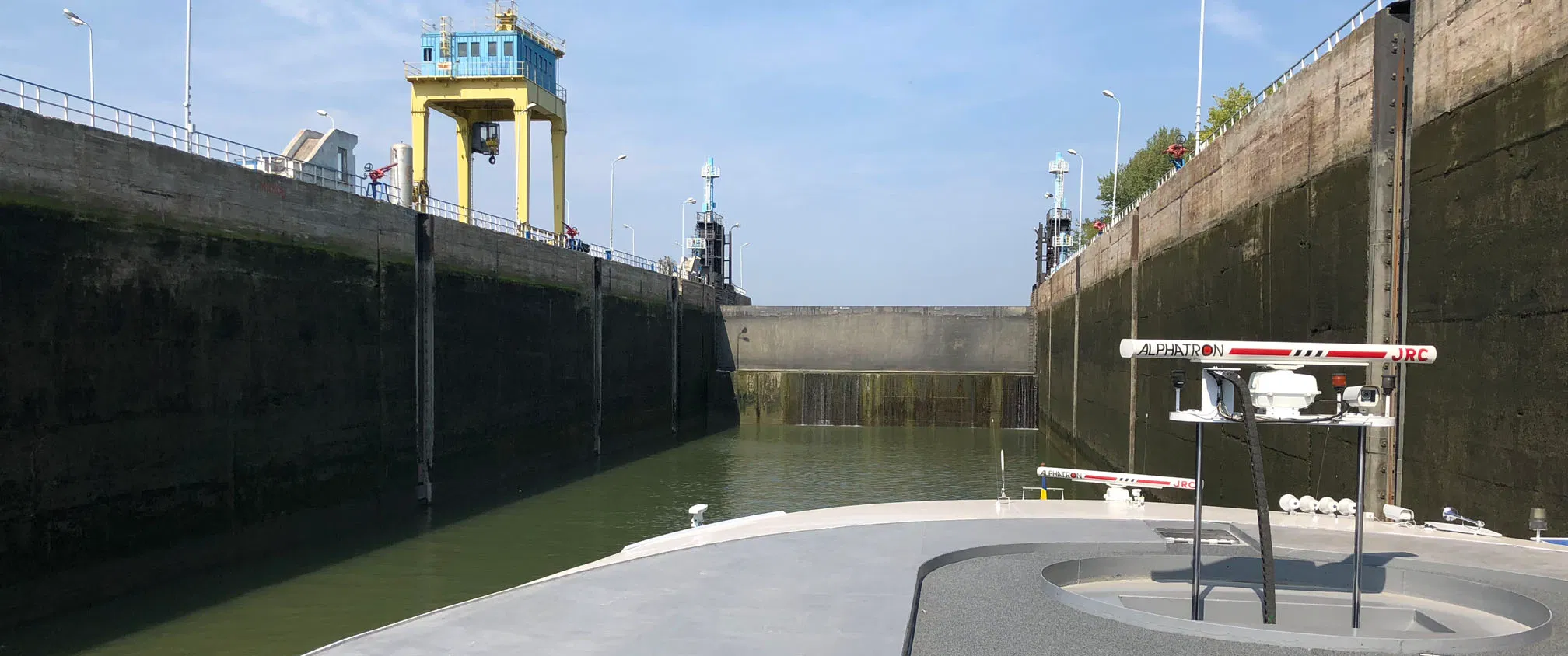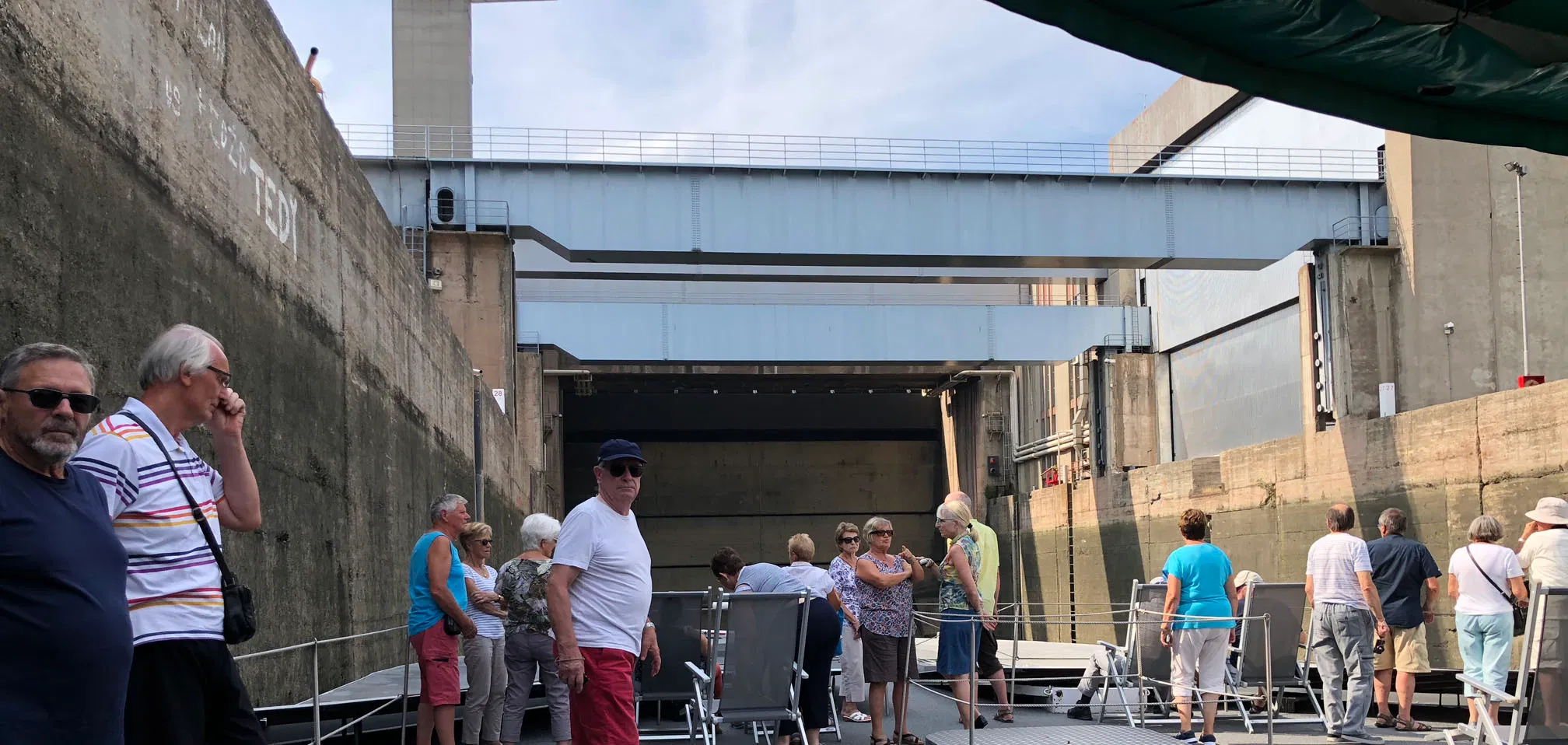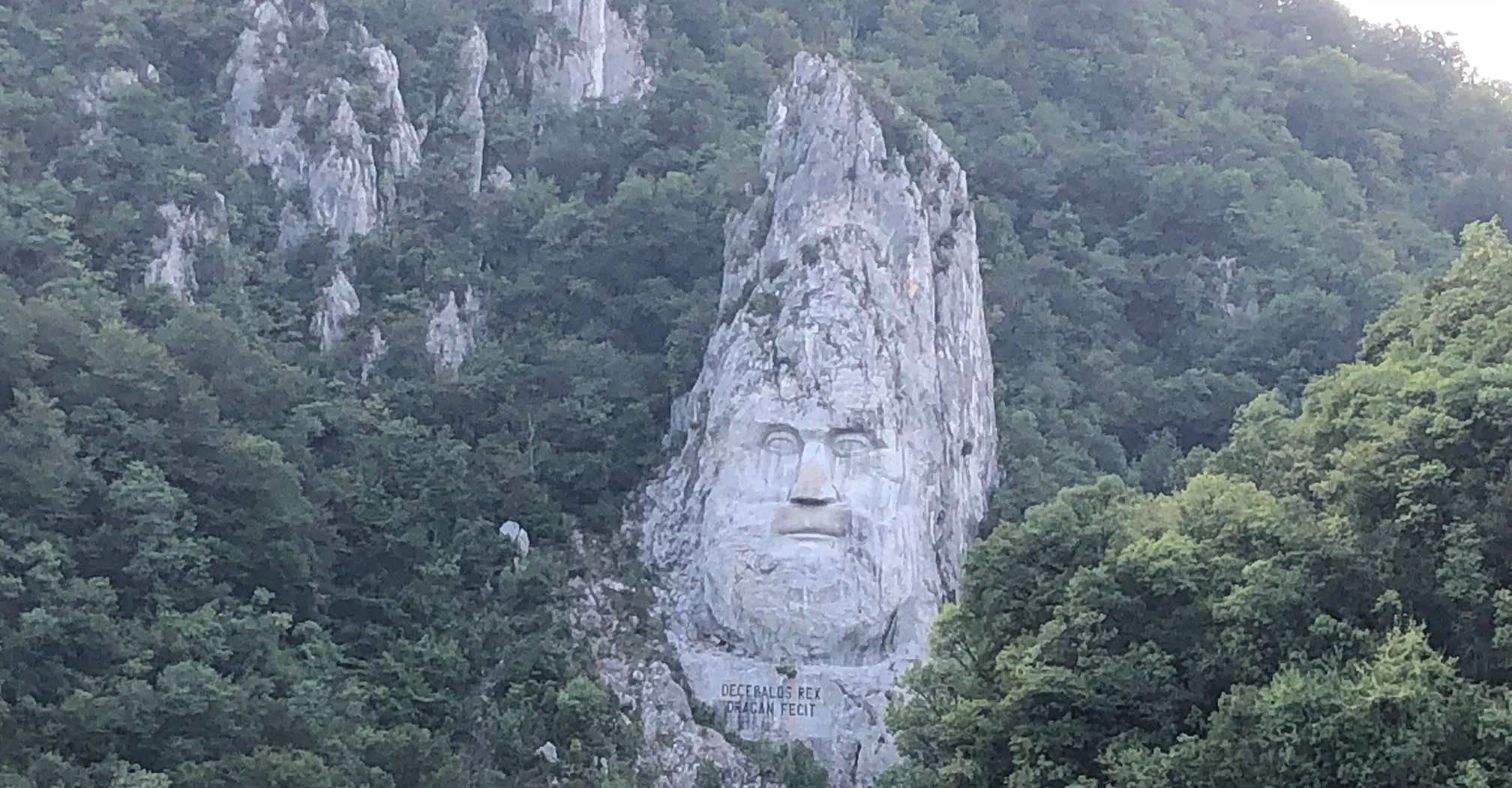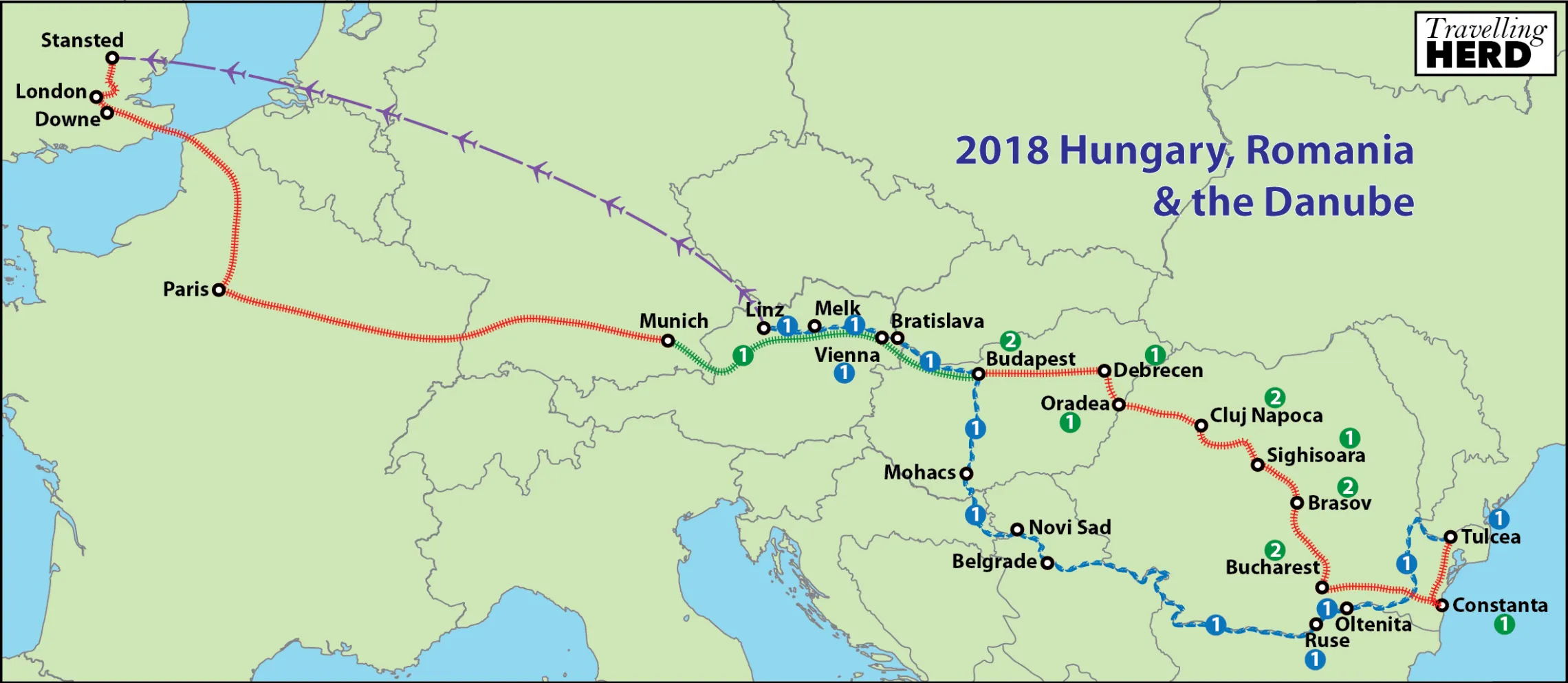Friday, 24th August 2018
The day was spent cruising through Romania, Bulgaria and Serbia, passing through the 140km scenic gorge on the Danube between the Carpathians and the Balkans, known as the Iron Gates. The two hydroelectric dams, built as a collaboration between Yugoslavia [now Serbia] and Romania are called Iron Gate I and Iron Gate II. Before entering the gates we passed the point where three countries meet: Romania on the starboard side and Bulgaria and Serbia on the port side separated by a small tributary to the Danube.

The completion of the dams in 1970 resulted in the Danube rising by up to 45m and there are now three locks to pass through. The geography of the area had to be changed and buildings and communities were sacrificed, including a whole island, Ada Kaleh, which was home to a thriving Turkish community. Prior to the dams and locks it would take ships four days to navigate the shallow waters through this part of the river, now it takes about 15 hours.

The Iron Gate II lock is a double lock [one lock immediately adjoined to the other with a common gate] the combined lock has a drop of 34m [The highest in Europe is 36m on the Douro, in Portugal].

On one side of the locks is the Serbian customs’ point; the vehicles then drive over the dam to Romania.

A memorial to Tito overlooks the lock from the Serbian bank.

This area was impassable by ship for centuries until Trajan built a canal. The Tabula Traiana, on the Serbian bank of the river is a Roman marble plaque honoring the ancient road, built by the Emperor Trajan, that once linked Rome to the province of Dacia. Both this plaque and the city of Orsova were moved uphill to preserve them from the flooding of the valley.

On the Romanian bank is a carving of Decebalus, the last king of Dacia, who fought against the Roman Emperors Domitian and Trajan to keep his country independent from Rome. Carved between 1994 and 2004 at 42.9m high and 31.6m wide, it is the tallest rock relief in Europe.

The Romanian Mracunia Monastery was also lost when the dams were built and a new one was erected on the bank of the Danube close to the site of the original to commemorate it. It now bears a slightly different name: Mraconia Monastery.

The reason they are called the iron gates is because this was the edge of the Ottoman Empire to the south and an iron chain was strung across the river at this narrow point which then acted as a border/customs control point.
Matilda is reminded of the Andrew Marvel poem “To his coy Mistress”
…… Let us roll all our strength and all
Our sweetness up into one ball,
And tear our pleasures with rough strife
Through the iron gates of life:
Thus, though we cannot make our sun
Stand still, yet we will make him run.”
which summarises the Travelling Herd philosophy of seeing as much of the world as we can and living life to the full.
Miles walked today: 1.5
Route Map:






